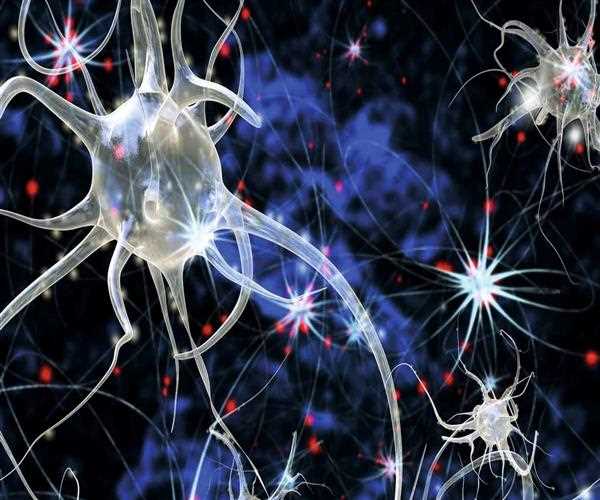Search here

25-Jun-2023 , Updated on 6/25/2023 11:52:20 PM
Explore the science behind Samadhi
Highlights
- Samadhi is a state of deep meditative absorption described in various spiritual traditions.
- It is a state of profound stillness and heightened consciousness where the practitioner experiences a sense of unity and oneness with the object of meditation.
- Samadhi is primarily associated with the practice of meditation in Hinduism, Buddhism, and Yoga.
- The scientific study of samadhi is a multidisciplinary field that combines neuroscience, psychology, and contemplative traditions.
- Neuroscientific research suggests that samadhi is associated with changes in brain activity and connectivity patterns.
Samadhi, a state of deep meditation and transcendent consciousness, has captivated spiritual seekers and scientists alike for centuries. It is a state where the mind is completely absorbed, and the practitioner experiences a profound sense of unity and bliss. While traditionally associated with spiritual practices such as yoga and Buddhism, modern science has started to unveil the underlying mechanisms and benefits of Samadhi.
In this view, we will delve into the science behind Samadhi, exploring its neurological, psychological, and physiological aspects to shed light on this enigmatic state of consciousness.
- Understanding Samadhi
Samadhi is often described as a state of non-dual awareness, where the boundaries between the self and the external world dissolve. It is characterized by a profound sense of calm, clarity, and connectedness. The practitioner enters a deep meditative state, where the mind is free from distractions and fully concentrated on the present moment. Through dedicated practice, individuals can achieve different levels of Samadhi, ranging from initial glimpses to profound and sustained states of transcendence.
- Neurological Perspectives
Recent advancements in neuroscience have enabled researchers to gain insights into the neurological underpinnings of Samadhi. Studies using neuroimaging techniques, such as functional magnetic resonance imaging (fMRI) and electroencephalography (EEG), have shown distinct patterns of brain activity during meditative states, including Samadhi.

During Samadhi, there is a decrease in activity in the default mode network (DMN), a network of brain regions associated with mind-wandering and self-referential thoughts. This reduction in DMN activity is linked to a sense of ego dissolution and the experience of unity and interconnectedness.
Moreover, studies have shown increased activation in the prefrontal cortex (PFC), the brain region responsible for executive functions and self-awareness. This heightened PFC activity during Samadhi suggests an enhanced ability to regulate attention and maintain focused awareness.
- Psychological Insights
From a psychological perspective, Samadhi can be seen as a state of optimal human functioning. It shares similarities with the concept of flow, coined by psychologist Mihaly Csikszentmihalyi, where individuals experience deep engagement and enjoyment in their activities.
Samadhi is associated with positive psychological states, including feelings of joy, peace, and equanimity. It can lead to a reduction in stress, anxiety, and depression, and enhance overall emotional well-being. Regular practice of Samadhi has been shown to increase mindfulness, compassion, and empathy, fostering positive interpersonal relationships.
- Physiological Effects
The practice of Samadhi has been found to have profound physiological effects on the body. Studies have demonstrated that during deep meditation, there is a decrease in heart rate, blood pressure, and respiration rate, indicating a state of relaxation and physiological balance.
Furthermore, research suggests that regular practice of Samadhi can positively impact the autonomic nervous system, promoting parasympathetic dominance, which is associated with rest, relaxation, and healing. This shift towards the parasympathetic state leads to improved immune function, reduced inflammation, and overall enhancement of the body's self-regulatory mechanisms.
- The Role of Neuroplasticity
Neuroplasticity, the brain's ability to reorganize itself in response to experience, plays a crucial role in the science of Samadhi. Regular practice of Samadhi has been shown to induce structural and functional changes in the brain, particularly in regions associated with attention, emotion regulation, and self-awareness.

Long-term meditators have demonstrated an increased thickness in the prefrontal cortex, which is associated with enhanced attention and emotional regulation. Additionally, studies have shown that meditation can promote neuroplasticity in regions such as the insula and anterior cingulate cortex, which are involved in self-awareness and empathy.
These findings suggest that the practice of Samadhi can reshape the brain's neural connections, leading to enduring changes in cognition, emotion, and behavior. It supports the idea that Samadhi is not merely a temporary altered state of consciousness but can have lasting effects on the individual's overall well-being and perspective on life.
- Integration of Science and Spirituality
The scientific exploration of Samadhi bridges the gap between spirituality and empirical research, offering a more comprehensive understanding of the human mind and consciousness. It allows for a dialogue between ancient wisdom and modern scientific methods, potentially leading to the development of evidence-based approaches to well-being and personal growth.
The scientific investigation of Samadhi also helps demystify the practice, making it more accessible to individuals from diverse backgrounds. It provides a framework for individuals to explore and experience the benefits of Samadhi without necessarily subscribing to any particular spiritual tradition.
The exploration of the science behind Samadhi has shed light on the profound impact this state of consciousness can have on the human mind, body, and spirit. From neurobiological changes to psychological well-being and physiological benefits, the practice of Samadhi offers a holistic approach to enhancing human potential and promoting a sense of interconnectedness.
As scientific research continues to unravel the mysteries of Samadhi, it holds promise for the development of novel interventions in mental health, stress reduction, and overall well-being. By integrating science and spirituality, we can harness the transformative power of Samadhi and explore its potential for personal growth, happiness, and the evolution of human consciousness.

SEO and Content Writer
I am Drishan vig. I used to write blogs, articles, and stories in a way that entices the audience. I assure you that consistency, style, and tone must be met while writing the content. Working with the clients like bfc, varthana, ITC hotels, indusind, mumpa, mollydolly etc. has made me realized that writing content is not enough but doing seo is the first thing for it.
Join Our Newsletter
Subscribe to our newsletter to receive emails about new views posts, releases and updates.
Copyright 2010 - 2025 MindStick Software Pvt. Ltd. All Rights Reserved Privacy Policy | Terms & Conditions | Cookie Policy